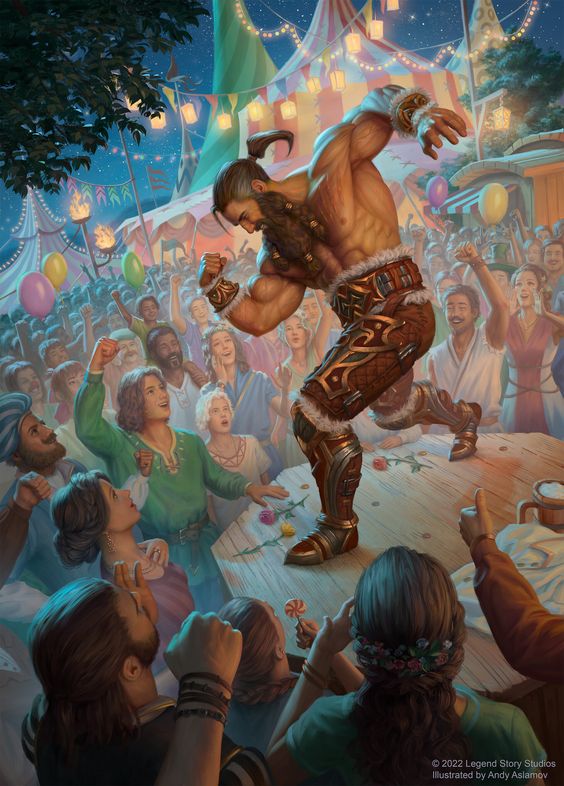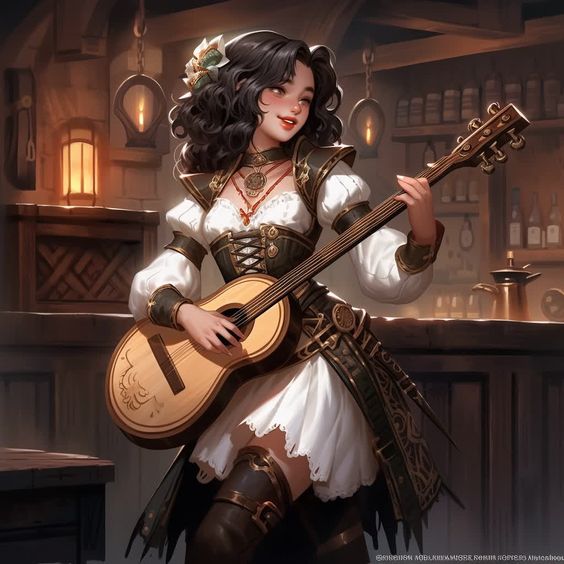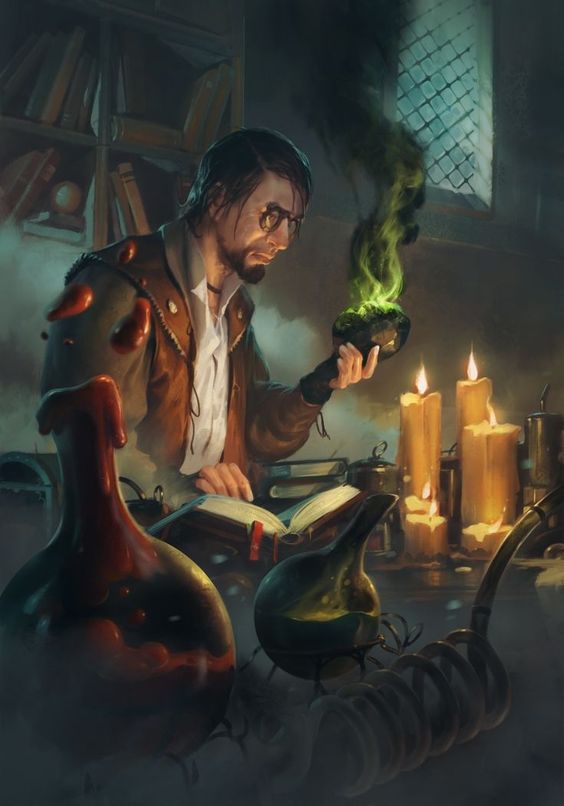D&D 5e: Giant Swords and Massive Damage: A Guide To Great Weapon Master
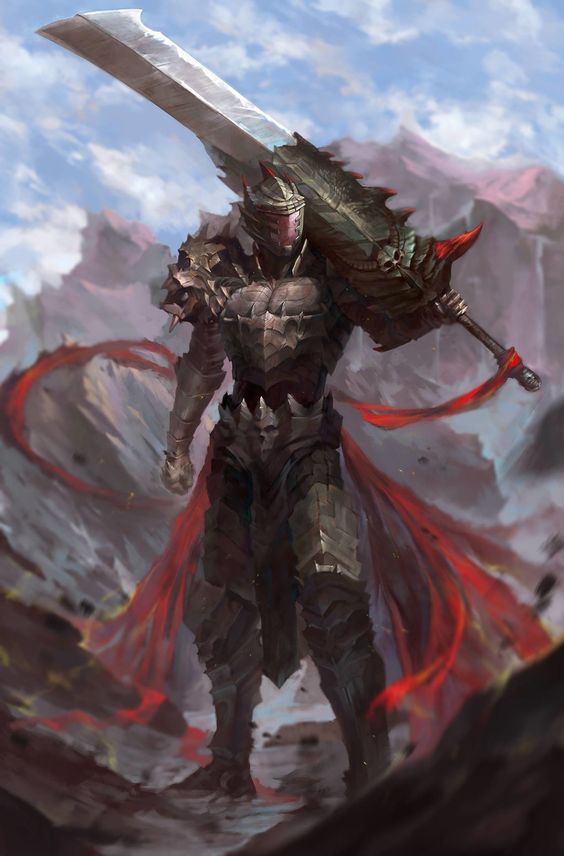
D&D 5e: Giant Swords and Massive Damage: A Guide To Great Weapon Master
Rating the Benefits of Great Weapon Master
Benefit #1 –
Before making an attack, a character can take -5 to the attack roll for a +10 to damage
This is a major damage buff that can almost double a character’s effective damage per attack, at the price of a significant hit debuff.
Benefit #2 –
Whenever reducing a creature to 0 hit points or scoring a critical hit, the character can make an attack as a bonus action
Free attacks are always good. This feature helps deal with hordes by adding attacks every time your massive damage takes one out. The bonus attack on crits is less reliable, but a great little bonus when it comes up.
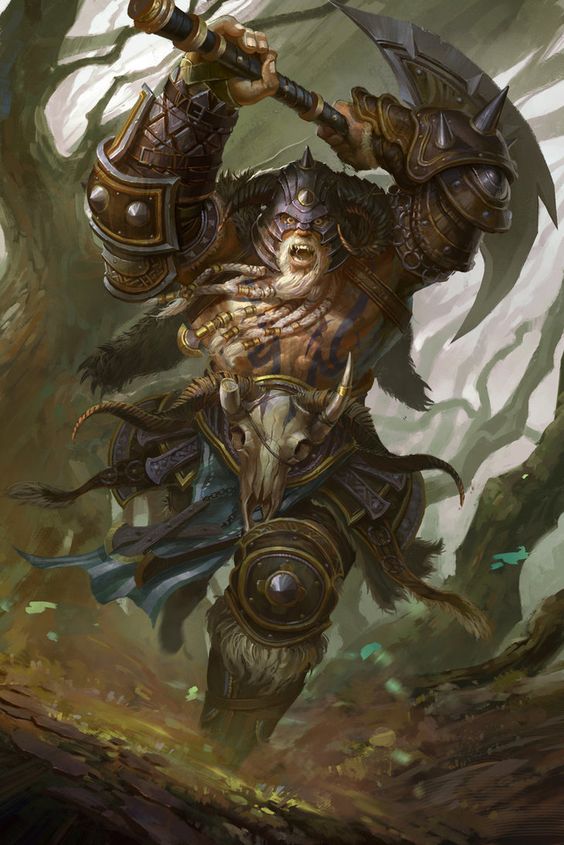
Mechanics and Requirements
Understanding How It Functions
Before we go over the mechanics of the Great Weapon Master feat itself, it’s worth looking at the weapons that qualify for the feat:
The Bonus Attack of GWM is usable with any melee weapon. However, the bonus damage can only be triggered while attacking with a weapon that has the Heavy quality.
The first point to know is that every weapon with the Heavy quality is martial, locking this feat to characters who have martial weapon proficiencies.
The second thing is that all weapons with the Heavy trait can be broadly divided into two categories: Great Weapons and Polearms.
Great Weapons
- Greataxe – 1d12 slashing,
- Greatsword – 2d6 slashing,
- Maul – 2d6 bludgeoning
Polearms
- Glaive – d10 slashing, reach
- Halberd – d10 slashing, reach
- Pike – d10 piercing, reach
The delineation is clear. Choose a two-handed great weapon for maximum damage, and choose a polearm for lower average damage, but the benefit of 10ft reach.
Boosted Damage
The first part of the Great Weapon Master feat is pure damage. Before making an attack, a character with this feat can take a -5 penalty to their hit roll, gaining a huge +10 to the damage roll.
Some important things. First off, the bonus can be switched on and off at will, on a per-attack basis. You could, for example, freely power swing at one enemy, miss, then make a second normal attack instead with a higher chance to hit.
Alternatively, this allows a character with ways to get bonus attacks from somewhere (Class Features, spells like Haste, feats like Sentinel, this feat…) to stack bonus damage onto every single swing.
Second, to qualify for the bonus damage, the attack has to be made with a weapon that has the Heavy quality, which the character is proficient in. Realistically, this is never going to matter, as anyone taking this feat should be using weapons that qualify.
Finally, the attack has to actually hit for the bonus damage to matter. We have a breakdown of the maths further into the guide, but for now, common sense is a great rule of thumb;
Are you fighting a monster that’s easy to hit, but has a massive pile of HP? Power attack.
Are you instead frustrated by low HP, frustratingly evasive enemies that you struggle to hit normally? Probably best to swing normally.
Do you have advantage on your attacks? Definitely make a power attack.
Is the enemy almost dead? A normal attack with a higher chance of success is probably better.
With all that said, the damage bonus from Great Weapon Master is absolutely monstrous. To put it into perspective, a character just hitting tier 2, at level 5, might be dealing an average of 14 damage per hit (7 weapon damage, the average of 2d6 + 3 from Strength, and a floating +2 bonus that might be from, for example, Barbarian Rage.)
The bonus damage from GWM effectively increases that by more than two-thirds. The damage on a standard hit jumps from 14 to 24. So looking for opportunities to use the power attack and gain that bonus damage is key to making the best use of the feat.
Bonus Attacks
The second part of the GWM feat is a bonus action attack that triggers whenever the character lands a critical hit or reduces a creature to 0 hit points.
Firstly, let’s address the reliability issue. Neither of the triggers for this attack are things a character can guarantee will happen, except in very particular circumstances.
Firstly, almost every attack roll made in D&D 5e only ever crits on a natural 20, a 5% chance. There are some edge cases, such as automatic crits against Stunned targets. But for most characters, a crit is always and only ever 1 in 20.
Attacking when downing a target is more reliable, but revolves around two things:
- You have to take the creature down to 0 HP. Allies rolling hot or purposefully taking kills can prevent this, as can a streak of bad luck misses, or just not fighting the enemy that your team is currently focusing on.
- Certain encounters just aren’t set up to facilitate this. A swarm of low HP enemies that are easy to kill? Great. Swing away. One or two big, singular enemies with a pile of HP. Not gonna happen.
However, this isn’t the big draw of the feat. Consider the bonus attack to be that; a bonus that triggers occasionally.
Key Stats
The Great Weapon Master feat offers nothing in the way of stat boosts. However, every weapon that qualifies for this feat requires Strength for its attack and damage rolls, so look to max that first.
Ideal Characters for Great Weapon Master
Top Classes
Barbarian – If there was one class that screamed “Pick up your biggest weapon and charge” it would be Barbarian. Let’s be fair, in combat, the Barbarian’s probably constantly screaming anyway.
Combine the ability to switch on at-will advantage to guarantee those big swings land, with an inbuilt damage bonus from Rage and a naturally tanky frame that wants to be in the thick of fighting, and you’ve got a class that’s perfect for wielding the largest weapons in 5e.
Every subclass is fantastic. Totem Warriors are incredibly resilient, flexible, and fun. Ancestral Guardians make their allies harder to kill as they murder everything. Path of the Giant becomes massive, extending their weapons’ range to literally gigantic proportions.
Paladin – What happens when you take a holy warrior pumped up on divine power, with the ability to channel spell slots into colossal bursts of magical weapon damage, and you give them a weapon longer than most people are tall?
Everything dies, that’s what.
Innate access to GW fighting style, heavy armor, a pile of HP, healing, plus a second massive damage bonus in Smite, adds up to a terrifyingly powerful bruiser that can and will destroy everything within weapon range. At least until their spell slots run out.
Fighter – Combining a chassis with access to every style of weaponry and armor in 5e, access to all fighting styles, more attacks and feat slots than any other class, and the ability to, once per rest, go nova and attack twice in a round, makes the Fighter probably the single best class in the game at specializing into a singular style of fighting.
In terms of subclasses, the Battlemaster is as good as it always is, stacking more damage, disabling conditions, and even increasing hit chance to land the mighty swings. Rune Knights can become Huge to control battlefield space, plus slam conditions onto enemies multiple times per day. Finally, the Echo Knight can summon a clone of itself to safely make attacks and prevent enemies from moving without wasting damage on a 1HP, infinitely resummonable shadow clone jutsu.
Race or Subrace Choices
Bugbear – The main benefit of the Bugbear race, +5ft to weapon reach on your turn, is such a massive benefit that it could be the only thing the race offered and it would still be worth taking. On top of this, a character built as a Bugbear gains proficiency in Stealth, plus massive bonus damage on any turn in which they successfully surprise their enemy.
Hobgoblin – Leaning in a surprisingly team-friendly direction, a Hobgoblin can boost their hit rolls several times per day without needing an action, after missing, and can help their allies as a bonus action on the turns they’re not using it to attack.
Variant Human – Yes, VHumans are in every optimization list. Because a free feat at level 1, especially one this powerful, is simply that good.
Combos, Tactics, and Synergies
Complementary Feats
Lucky – The ability to switch on advantage multiple times per day, for attack rolls, skill checks, and saves, is an incredibly powerful ability that can keep a character running through the roughest situations.
Sentinel – Prevent enemies from moving away from you, and attack anyone foolish enough to take a swing at your allies.
Polearm Master – Basically every two-handed martial polearm has the Heavy quality, so qualifies for the bonus damage on this feat. Conveniently, Polearm Master also comes with a permanent, low-damage bonus action attack that can be subbed out for a full power strike whenever you drop an enemy to 0HP.
Spells that Synergize
Bless – Adding 1d4 to every attack roll a character makes is already a major buff. Now apply that to multiple party members, and let them use the same bonus on saving throws too. Bless is incredibly powerful for a 1st level spell.
Haste – Move faster, become harder to hit, and make another attack every turn, for up to a minute. Just don’t lose concentration or you’ll be spending a turn doing nothing.
Smite spells – Many classes gain access to smite spells which trigger on hit, and tend to add more damage plus a disabling condition onto an attack. These are not only great for killing things quicker, but most of them also help the party.
Strategies for Maximizing Great Weapon Master Effectiveness
Landing the Big Hits
A -5 penalty to hit is a significant downside that a character with this feat is going to have to work to mitigate if they want their attacks to land.
There’s a simple formula for when to use the Great Weapon Master Power Attack, which looks like this:
Max Enemy AC = Attack Bonus – (Weapon Damage/2) + 16
Plugging in a level 4 character that’s just picked up this feat, we can calculate when we should use the bonus damage of the GWM feat.
Our attack bonus is +5. Our average weapon damage is 10 (avg 7 from 2d6, +3 from Str.) Cutting that in half gives us another 5. So the formula is:
5 – 5 + 16 = 16
This means we should use our bonus damage against every enemy with an AC of 16 or less, and make normal attacks against enemies with an AC higher than this.
Now let’s take a level 10 character with 20 Strength. Our attack bonus is +9 (prof. +4, Str +5.) Our weapon damage is 12, halved is 6. Our formula looks like this.
9 – 6 + 16 = 19
For this character, because their hit bonus has increased significantly, but the damage hasn’t, we can see that our target AC has also raised, and for best results, they should be using GWM’s bonus damage against every enemy with an AC of 19 or lower.
The math is simple enough that we can calculate our target AC once, then as our character gains or loses hit bonuses, adjust on the fly.
As an example, Bless gives an average of +2.5 to hit, so we can reduce our target AC to 13.5, or simply play it safe and reduce it by the minimum number rolled, down to 15.
Stacking Attacks
The main bonus of Great Weapon Master, a flat +10 to damage on every attack that hits, is an absurd amount of added damage.
The simplest way to optimize this is to make as many attacks as possible. Every attack you make is another potential +10 damage.
There are multiple ways to do this. So many classes, feats, and abilities in 5e allow characters to make extra attacks that this guide isn’t going to go into all of them. Just consider, when creating your build, how many attacks the character can make per turn, and potential ways to spend bonus actions and reactions on hitting enemies.
Bonus Attacks on Crits
Critical hits are surprisingly hard to build into in D&D 5e. There are a surprisingly low number of abilities that increase a character’s critical threat range or offer other boosts on crits.
Currently, there are two ways to increase the crit range:
- The Champion Fighter critically hits on a 19-20 from 3rd level, increasing to 18-20 at level 15.
- The Hexblade Warlock can curse an enemy once per short rest, which increases their critical range to 19-20 against that enemy only.
When landing a critical hit, there are ways to increase the damage dealt, which stacks with other damage sources. These include:
- The Half-Orc’s Savage Attacks racial feature, which adds another weapon damage dice on critical hits.
- The Barbarian’s Brutal Critical feature, does the same thing, adding another weapon damage dice on crits, increasing to two dice at 13th level and 3 dice at 17th.
To maximize the power of this, look for weapons with the largest damage dice possible. Greatswords deal 2d6 damage, so both of these features add another d6 (avg. 3.5) on crits, to a total of 5d6 (avg. 17.5.)
A Greataxe on the other hand deals d12 damage, which means these features add an average of 6.5 damage to every critical hit, hitting for 3d12 (avg. 19.5.)
Finally, it’s worth mentioning the simplest method of optimizing the amount of crits a character can get; Making more attacks.
If every attack rolls crits on a nat. 20, that means every dice thrown is a 5% chance of critting. 2 attacks is a 1 in 10 chance of crits, 10%. Throw 4 dice, and now you have a 20% chance of landing at least one crit. Plus, more attacks mean more overall damage, and that’s what a user of this feat should be focusing on.
Great Weapon Master and Ranged Weapons?
No, you haven’t gone mad. Great Weapon Master can qualify for attacks using certain ranged weapons. Sort of. If you squint a bit.
Hilariously, Heavy Crossbows and Longbows both have the Heavy quality, meaning if you make an improvised melee attack with either of these weapons, it gains the bonus damage. The Tavern Brawler feat lets a character attack with an improvised weapon as if they have proficiency, meaning this can be a surprisingly viable emergency attack.
Is throttling orcs unconscious with your longbow worth investing two feats into? Absolutely not. But it’s an amusing quirk of the rules, and worth pointing out.
Final Thoughts on Great Weapon Master
Great Weapon Master is a monstrously powerful feat, and any character using a weapon that qualifies without picking this feat up is leaving a ton of damage on the table.
Everything this feat does just stacks on more damage. If you’re at all interested in building an optimized two-handed weapon user, your build needs to fit the Great Weapon Master feat into it somewhere, preferably sooner rather than later.



